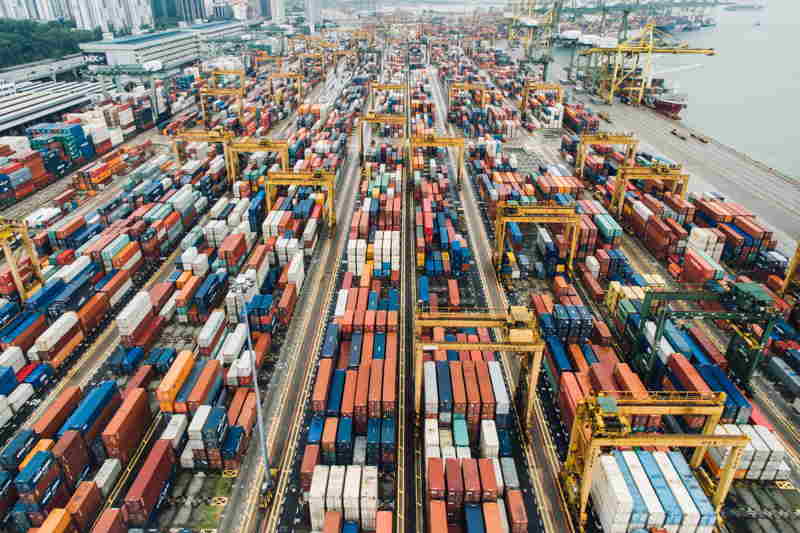Cargo safely secured? Check
An international push continues for the adoption of safe cargo-packing practices to avoid the loss of billions of dollars worth of goods and equipment annually in preventable accidents.
Five international freight transport and cargo-handling organizations collaborated on the newly released CTU Code: A Quick Guide, which condenses their advice on the packing of all types of cargo into 13 pages, and the Container Packing Checklist, which itemizes requirements for the packing of multimodal freight containers in a yes-or-no format.
The five groups — the Container Owners Association (COA), Global Shippers Forum (GSF), International Cargo Handling Coordination Association (ICHCA), TT Club and World Shipping Council (WSC) — said in a media briefing Thursday that the guide is designed to improve awareness and understanding of good practices in the packing of goods in cargo transport units (CTUs).
They said many cases of ship fires and container stack failures, vehicle rollovers and train derailments can be traced to poor packing practices. Peregrine Storrs-Fox, the TT Club’s risk management director, said in April that the organization has estimated the international maritime industry alone incurs losses of about $6 billion each year because of incorrectly packed or documented cargo.
“That includes damage to the cargo and delays, environmental cleanup, injuries and ship damage. The point is that $6 billion is totally unnecessary. If people followed things correctly, then that $6 billion would be saved to the entire industry,” he said then.
Storrs-Fox repeated that figure Thursday and said the TT Club, which provides insurance and related risk-management services to the international transportation and logistics industry, believes these accidents can be prevented. “The vast majority are avoidable by adopting established good practices,” he said.
The CTU Code was issued in 2014. Applying to packing and transport operations throughout the supply chain, the code was developed by the International Maritime Organization, International Labor Organization and United Nations Economic Commission for Europe.
In the years since the code was adopted, “we haven’t actually seen a significant improvement in the incident statistics. Certainly wherever we go, we see that a lot of people are not aware of the CTU Code at all,” Storrs-Fox said in April while discussing the launch of a cargo integrity campaign.
This week’s release of the guide and checklist are the latest steps taken as part of that campaign.
Richard Brough, the head of the ICHCA and moderator of Thursday’s web event, said it was clear from the number of cargo loss incidents that something more had to be done to attain adoption of the safety practices.
Storrs-Fox agreed, saying the TT Club had found “woeful ignorance” of the CTU Code.
The Quick Guide covers the end-to-end packing process and includes steps on securing cargo and the handling of dangerous goods.
Storrs-Fox was asked if adherence to the CTU Code could have prevented the massive explosion at the Port of Beirut on Aug. 4.
“All of these sorts of events take a very long time to understand precisely what’s happening,” he said. “That’s certainly the case with ship fires in recent years. They all take a long time to investigate. … But following each of those sorts of events, there should be added awareness and energy put to developing and following good practice.”
GSF Secretary General James Hookham called the checklist “a clear process map” for the packing of containers.
“There is a yes-or-no format and, upon successful completion, allows dispatch of a container,” he said.
Currently, the checklist is available as a PDF, but a mobile app is being considered, Hookham said.
The CTU Code itself is available in all six official U.N. languages — English, French, Spanish, Russian, Chinese and Arabic — and work is underway to produce the printable guide and checklist in multiple languages as well.
One set of guidelines is important regardless of the language, Hookham said.
“The organizations found common ground,” he said. “We’ve got a job to do and working at it together I think is better than we would have done working at it individually.”
WSC Senior VP Lars Kjaer stressed that the work continues.
“On behalf of the World Shipping Council, I can assure … that this initiative that we are launching today is not the conclusion of the concern that the CEOs of my member companies have regarding container safety,” Kjaer said. “It is but one initiative among a plethora of initiatives that … we have been asked by our principals to become involved in.”
Source: Freight Waves

